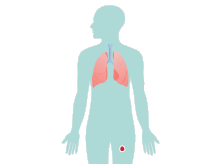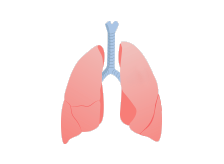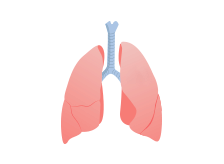Indications
-
ELIQUIS (apixaban) is a prescription
medicine used to reduce the risk of stroke and blood clots in people who have atrial fibrillation (AFib), a type of irregular heartbeat, not caused by a heart valve problem. -
ELIQUIS (apixaban) is a prescription
medicine used to treat blood clots in the veins of your legs (deep vein thrombosis) or lungs (pulmonary embolism), and reduce the risk of them occurring again. -
ELIQUIS (apixaban) is a prescription
medicine used in children from birth and older to treat blood clots in the veins of legs and lungs (venous thromboembolism) after at least 5 days of initial anticoagulant treatment, and to reduce the risk of them happening again. ELIQUIS was not studied and is not recommended in children weighing less than 5.7 pounds (2.6 kg). -
ELIQUIS (apixaban) is a prescription
medicine used to reduce the risk of forming a blood clot in the legs and lungs of people who have just had hip or knee replacement surgery.
Indications
-
ELIQUIS (apixaban) is a
prescription medicine used in adults to reduce the risk of stroke and blood clots in people who have atrial fibrillation (AFib), a type of irregular heartbeat, not caused by a heart valve problem. -
ELIQUIS (apixaban) is a
prescription medicine used in adults to treat blood clots in the veins of your legs (deep vein thrombosis-DVT) or lungs (pulmonary embolism-PE), and to reduce the risk of them occurring again after receiving treatment for blood clots. -
ELIQUIS (apixaban) is a
prescription medicine used in children from birth and older to treat blood clots in the veins of legs and lungs (venous thromboembolism) after at least 5 days of initial anticoagulant treatment, and to reduce the risk of them happening again. ELIQUIS was not studied and is not recommended in children weighing less than 5.7 pounds (2.6 kg). -
ELIQUIS (apixaban) is a
prescription medicine used in adults to help prevent a blood clot in the veins of your legs (deep vein thrombosis-DVT) and lungs (pulmonary embolism-PE) of people who have just had hip or knee replacement surgery.

After hip or knee replacement,
you may be at an increased risk
for blood clots
If you have had hip or knee replacement surgery, you should know about the risk of developing blood clots in the legs and lungs.
Why might you be at an increased risk?
- The surgery itself: Replacing a joint activates your body’s blood-clotting response
- The postsurgery recovery: After surgery, you’re less active for several days or weeks. That can cause blood flow to slow down, which increases the risk of developing blood clots
A common type of blood clot that patients may have after hip or knee replacement surgery is called deep vein thrombosis, or DVT.
Learn how ELIQUIS can help.
DVT is a blood clot in a vein (usually in the thighs or pelvis) that may block the flow of blood. DVT can cause many symptoms, including pain, swelling, and redness of the skin. But it’s also possible that patients with DVT may experience no symptoms at all.
From legs to lungs
DVT may lead to a pulmonary embolism
Sometimes a DVT blood clot can break free and travel to the lungs. This can lead to a serious condition known as pulmonary embolism (PE). PE can limit the blood flow to the lungs and carries the risk of sudden death.



After surgery a DVT blood clot can form in a vein, usually in the thighs or pelvis



The clot, or a part of the clot, may break off and travel through blood vessels toward the lungs



If that blood clot reaches the lungs it is called a PE. A PE can reduce or cut off blood supply to the lungs, and may even cause sudden death
The symptoms of PE may include:

Difficulty
breathing

Faster than normal
or irregular heartbeat

Chest pain

Coughing
up blood

Very low blood pressure,
light-headedness,
or fainting
Just like with DVT, some patients with PE may also have no symptoms.
What can help reduce the risk of having DVT/PE?
There are medicines that can help reduce the risk of forming a DVT/PE blood clot after a hip or knee replacement surgery. Your healthcare provider may prescribe a medicine called an anticoagulant, a type of blood thinner, that may help lower your chance of developing a blood clot.


